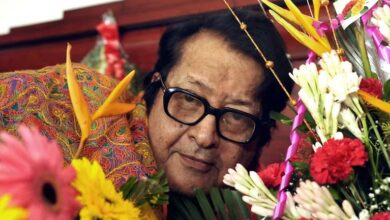Rabindra Jayanti is an annually celebrated cultural festival in the remembrance of Rabindranath Tagore, India’s first Nobel laureate. Tagore was a poet, writer, playwright, composer, philosopher, social reformer, and painter; he was good at everything he did. He started showing signs of becoming a polymath from a young age. Tagore began his career in short stories in 1877 when he was just 16. By the time he was 20, he had already written his first original dramatic piece. But before venturing into drama and short story writer, he started his literary by writing poems. 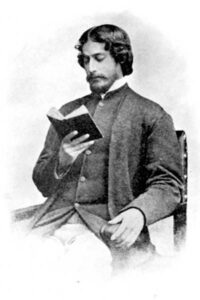
He reshaped Bengali literature and music as well as Indian art with Contextual Modernism in the late 19th and early 20th centuries. Author of the “profoundly sensitive, fresh and beautiful” poetry of Gitanjali, he became in 1913 the first non-European and the first lyricist to win the Nobel Prize in Literature.
Tagore’s poetic songs were viewed as spiritual and mercurial; however, his “elegant prose and magical poetry” remain largely unknown outside Bengal. He was a fellow of the Royal Asiatic Society. Referred to as “the Bard of Bengal”, Tagore was known by sobriquets: Gurudev, Kobiguru, Biswakobi.
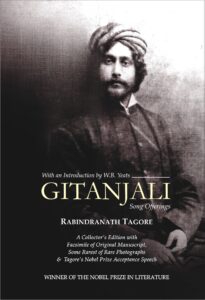
The day is prevalent among Tagorephiles, people who love Tagore and his world around the world. Rabindra Jayanti is celebrated in early May, on the 25th day of the Bengali month of Boishakh, since Tagore was born on this day of the year 1268.(7th May 1861)
Rabindra Jayanti is marked by cultural programmes and events. Followers of Tagore recite poetry and perform dances and drams, written and composed by him.Throughout the globe, Tagore’s birth anniversary is largely celebrated at Santiniketan, Birbhum in West Bengal.
As he was a versatile person, that’s precisely why he was called a polymath, an individual whose knowledge spans a substantial number of subjects. In other words, he was a person of encyclopaedic learning.
A Bengali Brahmin from Calcutta with ancestral gentry roots in Burdwan district and Jessore, Tagore wrote poetry as an eight-year-old. At the age of sixteen, he released his first substantial poems under the pseudonym Bhānusiṃha (“Sun Lion”), which were seized upon by literary authorities as long-lost classics. By 1877 he graduated to his first short stories and dramas, published under his real name. As a humanist, Universalist, internationalist, and ardent anti-nationalist, he denounced the British Raj and advocated independence from Britain. As an exponent of the Bengal Renaissance, he advanced a vast canon that comprised paintings, sketches and doodles, hundreds of texts, and some two thousand songs; his legacy also endures in his founding of Visva-Bharati University.
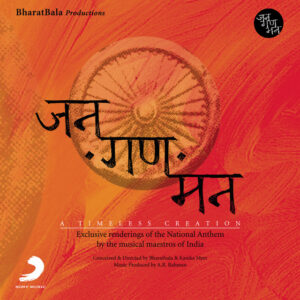
Tagore modernised Bengali art by spurning rigid classical forms and resisting linguistic strictures. His novels, stories, songs, dance-dramas, and essays spoke to topics political and personal. Gitanjali (Song Offerings), Gora (Fair-Faced) and Ghare-Baire (The Home and the World) are his best-known works, and his verse, short stories, and novels were acclaimed—or panned—for their lyricism, colloquialism, naturalism, and unnatural contemplation. His compositions were chosen by two nations as national anthems: India’s “Jana Gana Mana” and Bangladesh’s “Amar Shonar Bangla”. The Sri Lankan national anthem was inspired by his work.

Tagore was largely home-schooled. But he took keen interest in swimming in the Ganges, and even went out trekking through the hills. He was conditioned by his brother Hemendranath who took him swimming, and made him do gymnastics, judo and wrestling. While growing up, he started learning anatomy, geography and history, literature, mathematics, Sanskrit, and English at home. However, he loathed formal education.
Gitanjali is Tagore’s best-known collection of poetry, for which he was awarded the Nobel Prize in Literature in 1913.He was a prolific songwriter with 2,230 titles to his name. Later in his life, he took up drawing and painting.As for long-form writing, Tagore wrote eight novels and four novellas in his illustrious career.
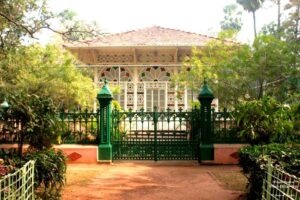
Shantiniketan
His father bought a huge land for meditation and named it Shantiniketan. Debendranath Tagore founded an ‘Ashram’ in 1863. In 1901, Rabindranath Tagore established an open-air school. It was a prayer hall with marble flooring and was named ‘The Mandir’. It was also named ‘Patha Bhavana’ and started with only five students. Classes here were held under trees and followed the traditional Guru-Shishya method of teaching. This trend of teaching revived the ancient method of teaching which proved beneficial when compared with the modernised method. Unfortunately, his wife and two children died and he left alone. At that time he was very disturbed. In the meantime, his works started growing and became more popular amongst the Bengali as well as foreign readers. In 1913, he gained recognition and was awarded the prestigious Nobel Prize in Literature, and became Asia’s first Nobel Laureate. Now, Shantiniketan is a famous University town in West Bengal.
Let us tell you that Rabindranath Tagore envisioned a centre of learning which would have the best of both the east and the west. He established the Visva Bharati University in West Bengal. It consists of two campuses one at Shantiniketan and the other at Sriniketan. Sriniketan focuses on agriculture, adult education, village, cottage industries.
Tagore was a turn of the century Bengali Poet, novelist, musician,painter ,playwright, spiritualist, educator, philosopher, composer, singer and cultural relativist Renaissance indeed.
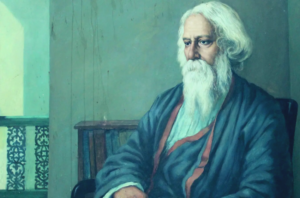
Impact and Legacy
Every year, many events pay tribute to Tagore: Kabipranam, his birth anniversary, is celebrated by groups scattered across the globe; the annual Tagore Festival held in Urbana, Illinois (USA); Rabindra Path Parikrama walking pilgrimages from Kolkata to Santiniketan; and recitals of his poetry, which are held on important anniversaries. Bengali culture is fraught with this legacy: from language and arts to history and politics. Amartya Sen deemed Tagore a “towering figure”, a “deeply relevant and many-sided contemporary thinker”. Tagore’s Bengali originals—the 1939 Rabīndra Rachanāvalī—is canonised as one of his nation’s greatest cultural treasures, and he was roped into a reasonably humble role: “the greatest poet India has produced”.
Blue plaque in honor of Tagore, erected in 1961 by London County Council at 3 Villas on the Heath, Vale of Health, Hampstead, London NW3 1BA, London Borough of Camden.
Tagore was renowned throughout much of Europe, North America, and East Asia. He co-founded Dartington Hall School, a progressive coeducational institution; in Japan, he influenced such figures as Nobel laureate Yasunari Kawabata. In colonial Vietnam Tagore was a guide for the restless spirit of the radical writer and publicist Nguyen An Ninh Tagore’s works were widely translated into English, Dutch, German, Spanish, and other European languages by Czech Indologist Vincenc Lesný, French Nobel laureate André Gide, Russian poet Anna Akhmatova, former Turkish Prime Minister Bülent Ecevit, and others. In the United States, Tagore’s lecturing circuits, particularly those of 1916–1917, were widely attended and wildly acclaimed. Some controversies involving Tagore, possibly fictive, trashed his popularity and sales in Japan and North America after the late 1920s, concluding with his “near total eclipse” outside Bengal. Yet a latent reverence of Tagore was discovered by an astonished Salman Rushdie during a trip to Nicaragua.
By way of translations, Tagore influenced Chileans Pablo Neruda and Gabriela Mistral; Mexican writer Octavio Paz; and Spaniards José Ortega y Gasset, Zenobia Camprubí, and Juan Ramón Jiménez. In the period 1914–1922, the Jiménez-Camprubí pair produced twenty-two Spanish translations of Tagore’s English corpus; they heavily revised The Crescent Moon and other key titles. In these years, Jiménez developed “naked poetry”.Ortega y Gasset wrote that “Tagore’s wide appeal [owes to how] he speaks of longings for perfection that we all have Tagore awakens a dormant sense of childish wonder, and he saturates the air with all kinds of enchanting promises for the reader, who pays little attention to the deeper import of Oriental mysticism”. Tagore’s works circulated in free editions around 1920—alongside those of Plato, Dante, Cervantes, Goethe, and Tolstoy.
Tagore was deemed over-rated by some. Graham Greene doubted that “anyone but Mr. Yeats can still take his poems very seriously.” Several prominent Western admirers—including Pound and, to a lesser extent, even Yeats—criticised Tagore’s work. Yeats, unimpressed with his English translations, railed against that “Damn Tagore .We got out three good books, Sturge Moore and I, and then, because he thought it more important to see and know English than to be a great poet, he brought out sentimental rubbish and wrecked his reputation. Tagore does not know English, no Indian knows English.” William Radice, who “Englished” his poems, asked: “What is their place in world literature?” He saw him as “kind of counter-cultural”, bearing “a new kind of classicism” that would heal the “collapsed romantic confusion and chaos of the 20th century.” The translated Tagore was “almost nonsensical”, and subpar English offerings reduced his trans-national appeal:
Anyone who knows Tagore’s poems in their original Bengali cannot feel satisfied with any of the translations (made with or without Yeats’s help). Even the translations of his prose works suffer, to some extent, from distortion. E.M. Forster noted of The Home and the World that he theme is so beautiful,’ but the charms have ‘vanished in translation,’ or perhaps ‘in an experiment that has not quite come off.’
— Amartya Sen, “Tagore and His India”.
Source : Wikipedia,various inputs
Photo Source : internet




